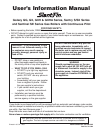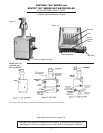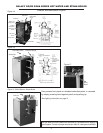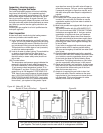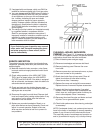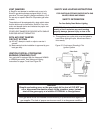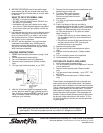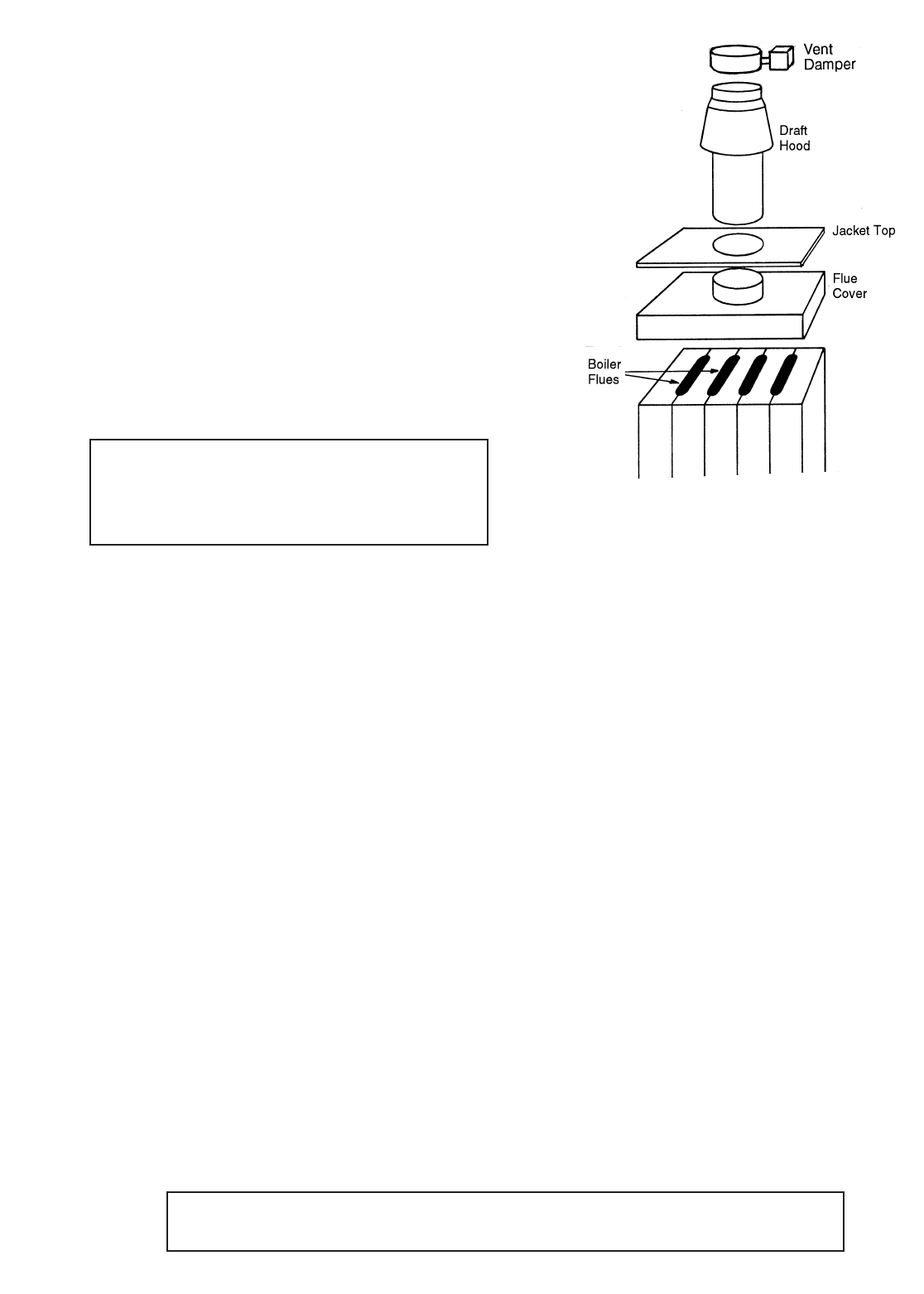
(7) If equipped with vent damper, which can ONLY be
installed on boilers equipped with 24 volt gas valve:
(a) Your vent damper must be OPEN when the boiler is
operating (BURNERS ARE ON). Ask your installer
or serviceperson to show you the vent damper posi-
tion indicator, indicating the open and closed
damper positions. Inspect for proper operation
monthly. If damper position indicator indicates that
the damper is closed when the boiler is operating,
SHUTDOWN the boiler immediately and call your
service agency.
(b) This device must be installed and inspected annually
by a qualified installer in accordance with the
Slant/Fin vent damper installation instructions. If
improperly installed, a hazardous condition such as
explosion or carbon monoxide poisoning could
result. If installed improperly, all vent damper and
boiler warranties shall be voided.
SERVICE INSPECTION
The selected service organization should make these
inspections, pref
erably once each year, before the cold
weather begins:
(1) Make the checks for leaks, corrosion, noise, flame,
heat and outside air supply described under User’s
Inspection.
(2) Check safety operation of the HIGH LIMIT CON-
TR
OL (and, for steam boilers, the LOW WATER
CUT
OFF) and GAS VALVE. If the boiler is equipped
with an automatic vent damper, check this device for
saf
e and automatic operation.
(3) Check gas input rate, by clocking the gas meter.
Inspect burner flame. Clean and adjust burners and
adjust gas rate as required.
(4)
Disconnect flue pipe from draft hood. Remove draft
hood and inspect boiler heating surface below. If any
soot, scale or rust is visible, clean the boiler as
described in the next section.
(5) Replace any corroded smokepipe. Repair or re-
place other devices as found necessary. Check and
adjust for normal operation. Explain to the user
what was done and what to look for to prevent fu-
ture problems.
CLEANING—BOILER, SMOKEPIPE,
CHIMNEY
(See Figure 21). If necessary as indicated
in (4) of Service Inspection section, the selected service
organization should clean the boiler as follows:
(1) Shut off electric power and gas supply.
(2) Disconnect smokepipe and remove draft hood.
(3) Remove jacket top panel. Remove flue cover
from boiler.
(4) Remove access door and remove burners, or place
cover over burners for dirt protection.
(5) Brush down boiler flues to bare metal. Clean all
debris from bottom of boiler after brushing.
Clean b
urner slots, if necessary.
(6) Replace flue cover and seal with furnace cement.
Replace burners if removed. Replace access door.
(7) Inspect draft hood and smokepipe. If corroded,
replace. If soot or deposits from condensation are
found, clean out, and inspect inside of chimney for
soot or other deposits. Clean if necessary.
(8) Reconnect hood and flue pipe and fasten and seal
all joints. Turn on gas and electric power.
(9) Check boiler performance after cleaning, and adjust
as necessary.
NOTE: Condensate (water), rust, scale and soot are not
found in the boiler or smokepipe of normally operating
system. If any of these is found, eliminate the cause.
The most likely cause of condensate and corrosion or
soot is (a) restr
icted air supply, or (b) a faulty chimney.
Your gas boiler must be installed and serviced by a qualified service agency or
gas supplier. The lack of proper service can result in a dangerous condition.
If you find during your inspection any unusual
noise, water leak, corroded smokepipe, abnor-
mal water pressure or flame rollout, call for
service immediately.
6
Figure 21.



